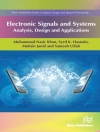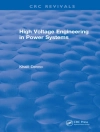A comprehensive survey of theoretical andexperimental concepts in fuel cell chemistry
Fuel cell science is undergoing significant development, thanks, in part, to a spectacular evolution of the electrocatalysis concepts, and both new theoretical and experimental methods. Responding to the need for a definitive guide to the field, Fuel Cell Science provides an up-to-date, comprehensive compendium of both theoretical and experimental aspects of the field.
Designed to inspire scientists to think about the future of fuel cell technology, Fuel Cell Science addresses the emerging field of bio-electrocatalysis and the theory of heterogeneous reactions in fuel cell science and proposes potential applications for electrochemical energy production. The book is thorough in its coverage of the electron transfer process and structure of the electric double layer, as well as the development of operando measurements. Among other subjects, chapters describe:
-
Recently developed strategies for the design, preparation, and characterization of catalytic materials for fuel cell electrodes, especially for new fuel cell cathodes
-
A wide spectrum of theoretical and computational methods, with?the aim of?developing?new fuel cell catalysis concepts and improving existing designs to increase their performance.?
Edited by two leading faculty, the book:
-
Addresses the emerging fields of bio-electrocatalysis for fuel cells and theory of heterogeneous reactions for use in fuel cell catalysis
-
Provides a survey of experimental and theoretical concepts in these new fields
-
Shows the evolution of electrocatalysis concepts
-
Describes the chemical physics of fuel cell reactions
-
Forecasts future developments in electrochemical energy production and conversion
Written for electrochemists and electrochemistry graduate students, electrocatalysis researchers, surface and physical chemists, chemical engineers, automotive engineers, and fuel cell and energy-related researchers, this modern compendium can help today’s best minds meet the challenges in fuel science technology.
สารบัญ
Foreword vii
Preface xi
Preface to the Wiley Series on Electrocatalysis and Electrochemistry xiii
Contributors xv
1. Hydrogen Reactions on Nanostructured Surfaces 1
Holger Wolfschmidt, Odysseas Paschos, and Ulrich Stimming
2. Comparison of Electrocatalysis and Bioelectrocatalysis of Hydrogen and Oxygen Redox Reactions 71
Marc T. M. Koper and Hendrik A. Heering
3. Design of Palladium-Based Alloy Electrocatalysts for Hydrogen Oxidation Reaction in Fuel Cells 111
Sung Jong Yoo and Yung-Eun Sung
4. Mechanism of an Enhanced Oxygen Reduction Reaction at Platinum-Based Electrocatalysts: Identification and Quantification of Oxygen Species Adsorbed on Electrodes by X-Ray Photoelectron Spectroscopy 147
Mitsuru Wakisaka, Hiroyuki Uchida, and Masahiro Watanabe
5. Biocathodes for Dioxygen Reduction in Biofuel Cells 169
Renata Bilewicz and Marcin Opallo
6. Platinum Monolayer Electrocatalysts: Improving Structure and Activity 215
Kotaro Sasaki, Miomir B. Vukmirovic, Jia X. Wang, and Radoslav R. Adzic
7. The Importance of Enzymes: Benchmarks for Electrocatalysts 237
Fraser A. Armstrong
8. Approach to Microbial Fuel Cells and Their Applications 257
Juan Pablo Busalmen, Abraham Esteve-Nuñez , and Juan Miguel Feliu
9. Half-Cell Investigations of Cathode Catalysts for PEM Fuel Cells: From Model Systems to High-Surface-Area Catalysts 283
Matthias Arenz and Nenad M. Markovic
10. Nanoscale Phenomena in Catalyst Layers for PEM Fuel Cells: From Fundamental Physics to Benign Design 317
Karen Chan, Ata Roudgar, Liya Wang, and Michael Eikerling
11. Fuel Cells with Neat Proton-Conducting Salt Electrolytes 371
Dominic Gervasio
12. Vibrational Spectroscopy for the Characterization of PEM Fuel Cell Membrane Materials 395
Carol Korzeniewski
13. Ab Initio Electrochemical Properties of Electrode Surfaces 415
Ismaila Dabo, Yanli Li, Nicephore Bonnet, and Nicola Marzari
14. Electronic Structure and Reactivity of Transition Metal Complexes 433
Heather J. Kulik and Nicola Marzari
15. Quantitative Description of Electron Transfer Reactions 457
Patrick H.-L. Sit, Agostino Migliore, Michael L. Klein, and Nicola Marzari
16. Understanding Electrocatalysts for Low-Temperature Fuel Cells 489
Peter Ferrin, Manos Mavrikakis, Jan Rossmeisl, and Jens K. Nørskov
17. Operando XAS Techniques: Past, Present, and Future 511
Christina Roth and David E. Ramaker
18. Operando X-Ray Absorption Spectroscopy of Polymer Electrolyte Fuel Cells 545
Eugene S. Smotkin and Carlo U. Segre
19. New Concepts in the Chemistry and Engineering of Low-Temperature Fuel Cells 565
Fikile R. Brushett, Paul. J. A Kenis, and Andrzej Wieckowski
Index 611
เกี่ยวกับผู้แต่ง
Andrzej Wieckowski is Professor of Chemistry at the University of Illinois at Urbana-Champaign. Professor Wieckowski pioneered the development of the method now known as Electrochemical NMR (EC-NMR) that combines metal/surface NMR and electrochemistry for studies of interfaces.
Jens K. Nørskov is Professor of Chemical Engineering and Photon Science, Stanford University, and Director of the Center for Interface Science and Catalysis at the SLAC National Accelerator Laboratory. His research interests include the theoretical description of surfaces, catalysis, electrochemistry, materials, nanostructures, and biomolecules.












